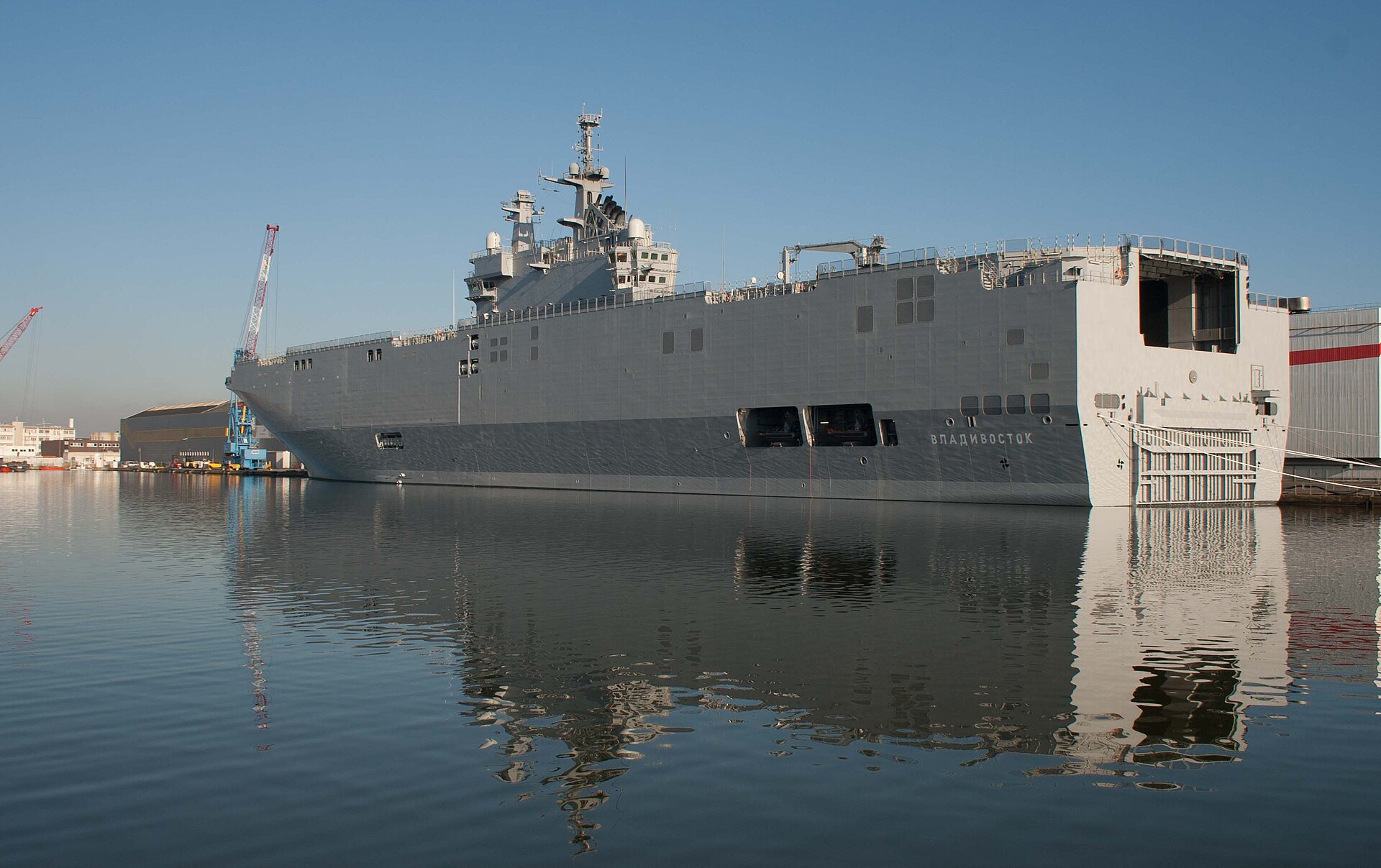This is a portion of a post that had been in the works for some time, but was, as they say, overtaken by events. Today, France announced that it would sell the pair of Mistral-class helicopter carriers/C2 ships to…Egypt. This is one of the more intriguing – though less obvious – buyers, and it’s likely that there was no small amount of Russian lobbying behind the scenes in Paris to ensure that the ships ended up there. But let’s examine how – and why – a pair of Mistrals is headed to Cairo.

The former Vladivostok, now to be purchased by Egypt
While Moscow more or less acquiesced to the cancellation of its Mistral purchase, it continued to try and help select the ultimate buyer (perhaps acknowledging that even if the Mistrals can’t project Russian power directly, perhaps they still can through an not-unfriendly power):
Russian Arabic-language television channel Russia Today quoted presidency spokesperson Dmitry Peskov as saying that his country hopes France, now free to use the ships after settling its dues, would take Russian interests into account when reselling the warships to a third party.
According to the Wall Street Journal, an Egyptian purchase of the two Mistrals seems to have been be countenanced by Moscow. From the DefenseNews article was a suggestion that Russia might precondition French sale of the Mistrals to Egypt, specifically, on the purchase of additional Russian-made Ka-52 attack helicopters, but it’s unclear what legal grounds they might have had to compel this. Nevertheless, Egypt completed a transaction with Russia in late August, in which it will indeed receive 50 Ka-52s by the end of the decade. It now becomes apparent what this purchase was intended for.
However, given the Mistral class’s weakness at point defense and subsequent requirements for adequate escorts, Egypt might have a difficult go of it with its existing fleet. While the Egyptian Navy is one of the largest in the world by sheer number of hulls, few are relatively modern. The French-built FREMM frigate Tahya Misr, delivered only this past June, is the mostly likely candidate to shepherd one of the Mistrals. However, the remainder of the Egyptian frigate force is of 1970s vintage and primarily consists of American surplus ships. It’s unclear which would be considered adequate to escort the other carrier.
Egypt is something of a natural for the Mistrals given their Russian fittings. The systems and electronics on the ships were done to Russian specifications, which could mean better interoperability with Egypt’s Russian- and Soviet-designed weapons systems (two frigates, almost a dozen missile boats, a handful of minesweepers). It might also be one of the few buyers who could and would be permitted to retain the Russian systems. Integration could prove tricky; however, Egypt has never been a slave to a single procurement source. Egypt sails ships of French, American, Chinese, Soviet, Russian, Spanish, and British origin, and in fact between the Russian fittings on the ships and recent purchases of French and Russian aircraft alike, Egypt would seem to be pursuing its own hybrid interests..
However, in this regard it might also represent a break with current Egyptian procurement trends, as future naval acquisitions on the books include French, German, and American ships. Furthermore, in terms of a command-and-control role, the backbone of the Egyptian Army is the M1A1 Abrams and F-16, and in large part its forces are equipped with American platforms and other western designs. Moscow’s enthusiasm for Egypt’s purchase of the Mistrals can probably be seen as an inroads into the Egyptian defense market, with the Russian-equipped ships a “teaser” introduction into a more integrated, comprehensive military system that would naturally call for the purchase of complementary platforms and systems from Russian industry. Whether Cairo is willing to humor Russia’s intentions remains an open question.
The role the flattops would play in Egyptian strategy and operations seems relatively limited, but it’s likely that one would operate primarily in the Mediterranean, while the other freely transits the Suez Canal (the Mistral‘s draught allows plenty of clearance) to patrol the Red Sea and the Persian Gulf. The latter could portend a much more active role for Egypt on the Arabian Peninsula – while occasionally marred by disagreement, for the most part Egypt’s relations with the Gulf Cooperation Council (GCC) are solid, and represent a clear force multiplier for the Gulf states. Having a forward presence in the immediate area – particularly around Yemen – would allow Egypt to play a much more active role in ongoing operations there (unless, of course, it is already).
A Mediterranean Mistral might have been cause for alarm in Tel Aviv, but since the ouster of Mohamed Morsi seems unlikely to ruffle any feathers. If anything, a Mistral here would probably support Egyptian operations in Libya, or possibly to affect events on the ground in Syria – though operations to counter which side remains unclear.

Egyptian Air Base Locations
Cairo’s impetus for acquiring a pair of Mistrals is presumably less about their helicopter-carrying capabilities and more about command-and-control as well as the power projection that a flattop entails. Such capabilities might be especially helpful should Egypt plan to expand its involvement in the various regional anti-Daesh and anti-Houthi campaigns to include a significant ground force presence. In terms of the perpetual struggle for leadership roles in the region, the ability to project power reinforces Egypt’s status as one of the real players, a top-tier regional power that can throw its weight around.
But hey, if it also turns Egypt into an even bigger market for Russian arms, that’s another win, too.



![article-2385430-1B2B7202000005DC-913_634x388[1]](https://automaticballpoint.files.wordpress.com/2013/08/article-2385430-1b2b7202000005dc-913_634x3881.jpg)



